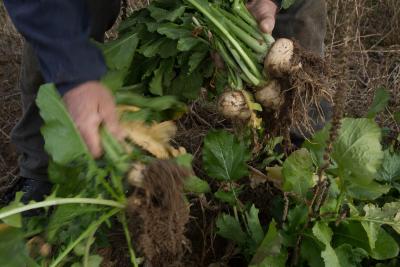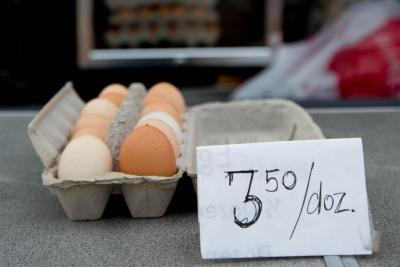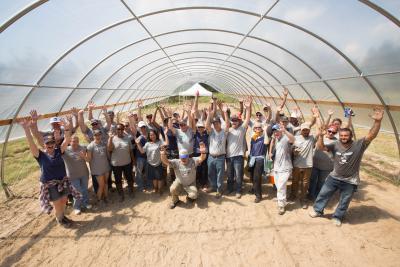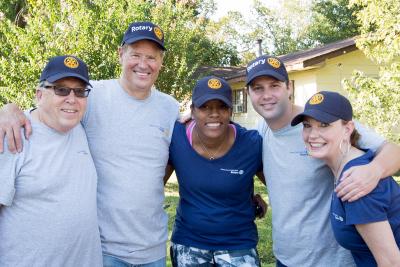

Alkis Doucakis gave us a very interesting talk that explored the Linksfield Ridge and Orange Grove with references to Gandhi from time to time. He showed us many old photographs of the area including one of Lord Roberts sitting in his study at the Orange Grove Hotel with a small girl in the background.
Alkis had actually interviewed the small girls daughter as part of his research.
This is a a painting taken from the photograph, modified for dramatic effect and changed to an etching.
Last week was also the time of Rotary Family Health Days. I put the pictures on our Facebook page last week but here they are again.


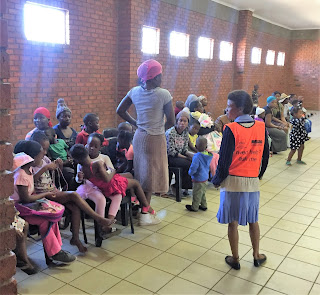

Here is the link to the Joburg City Website that refers to Rotary Family Health Day
Many thanks to Les Short for spotting this.
Also last weekend was our Senior Youth Leadership Course in the Magaliesberg. Here are the Sunday Braai Team.

I think that there were about 24 at the Seminar including two from the new embryo club, Sarah Tabane and Malusi Msani. Unfortunately I didn't think to take a photograph of them. They both sid how much they had enjoyed it and commented on how friendly and welcoming everyone was.
Something that the club must bare in mind for the future. Clubs will not be allowed to apply for Global or District Grants if no-one has attended a Foundation Seminar. Obviously Mike Lamb and I were there but nobody else from the club was so it's important to be aware of that.
Rotary Leadership Institute Courses Saturday 11th November
 You will all have received an email from District about these courses and a link to an application form. All new and potential Rotarians should really make the effort to attend Part 1. If you are not yet inducted as a member then you obviously would not have received the form. Just speak to me about it and I will send you one. It is not just about our club it's also about meeting people from other clubs and finding out what they think and do.
You will all have received an email from District about these courses and a link to an application form. All new and potential Rotarians should really make the effort to attend Part 1. If you are not yet inducted as a member then you obviously would not have received the form. Just speak to me about it and I will send you one. It is not just about our club it's also about meeting people from other clubs and finding out what they think and do.This Week
Our speaker is Robin Binckes. He currently conducts history experiential tours to overseas visitors as well as leading South African Companies. In addition he is deeply involved in Alexandra township, being a Trustee of Khayalethu Hostel and Project Managing an HIV/AIDS Orphans initiative for Investec Bank, as well as a pre-school Nursery “Ba-amagaleng” for 48 HIV/AIDS orphans. Having lived through and having participated in the Apartheid era, he is now a dedicated South African, committed to building a better future for all.
Robin has a career which spans Marketing, Public Relations, Food Retailing and Tourism.
He owned and managed his own Public Relations & Marketing Consultancy for 15 years and played a leading role in breaking the sports boycott during the period of sports isolation. He consulted on all aspects of communication both locally and internationally to diverse clients which included South African Cricket Union, South African Tennis Union, Transvaal Cricket, Benson & Hedges Cricket, John Player Knock-Out (Football), Yellow Pages, OK Bazaars (1929) Pty Ltd, Londolozi Resorts, Food Corporation, Transkei Development Corporation, Transkei Hotels, South African Navy, South African Breweries, Barlows Ltd, South African Formula One and Motor Cycle Grand Prix as well as South African Motor Racing and the Department of Sport. Fulfilling these roles frequently required simultaneous management of projects in Europe and Australia and New Zealand.
In addition he, and colleague Lee Irvine, created and managed a unique sporting event. The Datsun Double Wicket Cricket International, featuring teams from around the world during the sports boycott. This was followed by the “Southern Sun International” - the first International Hot Air Balloon Race ever to be staged in the Southern Hemisphere.
He, and his company was successful in re-branding the “Gillette Cup” cricket tournament to the “Datsun Shield” and managed this event for a number of years.
After being sent to Australia to examine limited overs cricket, worked as a consultant to United Tobacco Company in the development and management of “Benson & Hedges Series Cricket” the first night cricket tournament in South Africa. He was also responsible for a campaign which “Saved the South African Formula One Grand Prix” for which he was commended by the then Minister of Sport, F.W.de Klerk.
His passion for this country is contagious and through his experiential programmes he paints a picture of how everyone can play a role in building for the future. Using our history as his source he tells stories which illustrate the strength and resilience of the people and the leaders from our diverse cultures, enabling delegates to understand and identify with the struggles which have taken place in this country since 1615.
His presentations are balanced and fair to all sectors of the community. Because of the use of himself as one of the “privileged, who enjoyed the fruits of apartheid, without doing anything to change the system”, his personal narratives are revealing, honest and at the same time shocking.
Recent Projects and Achievements
- Appointed to History sub-committee of Freedom Park.
- Public Speaking engagements for diverse corporate clients.
- Guest speaker on marketing and communications.
- Appointment to committee of Alexandra NOAH.
- Project Manages an initiative in Alexandra for Investec providing support to 223 HIV/AIDS orphans.
- Trustee of the Zulu Hostel “Khayalethu” in Alexandra.
- Speaker on Leadership and South African hero’s.
- Winner of Guide of the Year “For his contribution towards the development of Tourism in Gauteng.”
- Consulted to members of Slovo family and Universal Studios including actor Tim Robbins on Death Squads and Vlakplaas.
- Consulted to Designers of Freedom Park.
Mobile phones and simple text messaging may be the keys to victory in the world’s largest public health initiative: the eradication of polio.
As the disease retreats from the global stage, thriving in only a few remote areas in three countries, it’s up to health workers to deliver vaccines and share information with speed and accuracy.
Rotary and its partners in the Global Polio Eradication Initiative are strengthening the lines of communication by giving cellphones to health workers in Pakistan and Nigeria, where a single text message could save a life.
In Pakistan, Rotary has been working to replace traditional paper-based reporting of maternal and child health information, including polio immunization data, with mobile phone and e-monitoring technology.
Community health workers across the nation have received more than 800 phones through a partnership with Rotary, the Pakistani government; Telenor, the country’s second-largest telecommunications provider; and Eycon, a data monitoring and evaluation specialist. Organizers plan to distribute a total of 5,000 cellphones by the end of 2018.
Health workers can use the phones to send data via text message to a central server. If they see a potential polio case, they can immediately alert officials at Pakistan’s National Emergency Operations Center. They also can note any children who didn’t receive the vaccine or parental refusals – and record successful immunizations. In Pakistan, the polio eradication effort aims to reach the nation’s 35 million children under age five.
The result is a collection of real-time information that officials can easily monitor and assess, says Michel Thieren, regional emergency director of the World Health Organization’s Health Emergency Program.
“Cellphone technology signals tremendous progress in the polio eradication program,” says Thieren, who has directed polio-related initiatives for WHO in Pakistan. “The data we collect needs to have such a granular level of detail. With real-time information that can be recorded and transcribed immediately, you can increase accuracy and validity.
“This gives governments and polio eradication leaders an advantage in the decisions we need to make operationally and tactically to eliminate polio,” Thieren says.
Beyond polio
Health workers also are using mobile phones to monitor a multitude of maternal and child health factors.
Pakistan’s child mortality rate ranks among the highest in the world, according to UNICEF, with 81 deaths under age five per 1,000 live births.
But mobile technology can help reduce those deaths, says Asher Ali, project manager for Rotary’s Pakistan PolioPlus Committee.
“Our health workers, including community midwives, are tracking pregnant mothers,” Ali says. “When a child is born, they can input and maintain complete health records, not just for polio, but for other vaccines and basic health care and hygiene needs.”
They also can monitor infectious diseases, such as malaria, tuberculosis, and influenza-like illnesses, as well as child malnutrition and maternal health concerns.
“If there is a problem with the baby or the mother, we can send information to the government health departments immediately, so they can solve the issue quickly and adjust their strategies,” Ali says.
Cellphones also facilitate follow-up visits with families, because health workers can send appointment reminders over text message.
Proliferation of phones
Mobile phone use worldwide has spiked recently, with about 7 billion subscribers globally, 89 percent of them in developing countries, says WHO. Even people living on less than $1 a day often have access to phones and text messaging, according to WHO. Cellphones are used more than any other technology in the developing world.
Rotary and other nonprofit organizations are leveraging this fact to boost a variety of health initiatives.
The Grameen Foundation conducts a “mobile midwife” program that sends daily texts and weekly voice mails to expectant mothers, offering advice during pregnancy and the first year of the child’s life. UNICEF provides similar support to mothers, with a focus on nutrition throughout pregnancy and the first two years of a child’s life.
Mobile phones also are helping in the fight against HIV/AIDS in Africa. The British nonprofit Absolute Return for Kids uses text messages to remind patients about medications and upcoming appointments.
The Ugandan health ministry’s mTrac program, a mobile text messaging data collection network run in conjunction with UNICEF and other organizations, has a broader focus. Nearly 30,000 workers at 3,700 health centers submit weekly reports through their phones and receive surveys, alerts, and other communications. Questions go out to health workers about medical supply levels, conditions in clinics, and other critical issues.
Members of the Rotaract Club of The Caduceus, India, collaborated with the Jana Swasthya Project in 2015 to screen more than 8,000 people for oral health conditions, hypertension, and diabetes during Kumbh Mela, one of the world’s largest Hindu festivals. The project established a digital disease-surveillance system to study epidemiological trends, replacing a paper-based data-tracking process and allowing officials to access live data with a few clicks.
In 2016, after Nigeria saw its first polio cases in almost two years, Rotary and WHO officials rushed to replace traditional reporting with a cell-based system in the northern state of Borno, where the new cases were identified. The mobile phone initiative has since expanded to more than 11 states.
“Traditional paper reporting was misleading our program. The information we were getting was not entirely accurate. This gave us the sense that we were doing better than we actually were,” says Boniface Igomu, program coordinator of Rotary’s Nigeria PolioPlus Committee. “With cellphones, we’re identifying problem areas quickly and acting accordingly.”
The country has yet to see a polio case this year.
Nigeria is also using cell-based mapping technology to identify areas that polio immunization teams have missed. Health workers test stool samples from children arriving from remote areas and log reports of acute flaccid paralysis. This effort started in Borno but has expanded to three additional states, Igomu says.
After more than 1,000 people died earlier this year in Nigeria from meningitis, the country used the same digital tools in emergency vaccination campaigns, he adds.
“Mobile technologies are the type of innovations that can fill in the gaps of our program and finally help us end polio for good,” Igomu says. “Their uses have never been more important than now.”





















